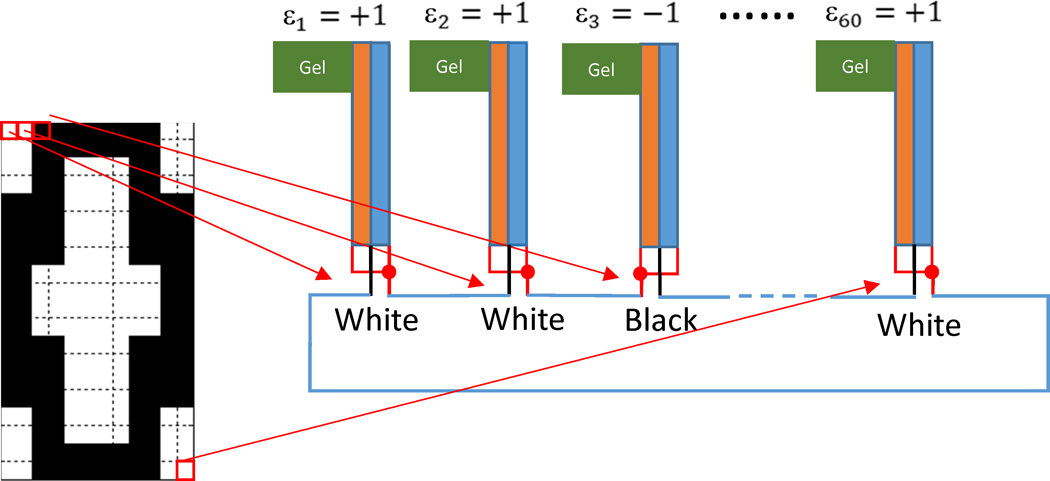Live chemistry. The computational substance from the Belousov-Zhabotinsky gel recognizes simple images

Spiral waves in Belousov-Zhabotinsky chemical gel (left) and Dictyostelium discoideum live cellular mucosa (right). Photo: Irving R. Epstein
Opened in the 1950s, the pulsating Belousov-Zhabotinsky gel immediately attracted the attention of scientists as a classic example of non-equilibrium thermodynamics. This is a rather strange chemical substance that cyclically changes its properties over time, forming a complex space-time structure.
The gel consists of long polymer molecular chains and a catalyst (for example, ruthenium). When special nitrogen compounds are added, a complex cyclic chemical reaction begins in the substance (a chain of about 80 simple reactions ), as a result of which the catalyst either loses or attracts electrons, forcing the polymer chains to decrease or increase. This leads to a pulsating substance that can last up to several hours.
The pulsation of the substance does not occur randomly. For example, gel cubes separated from each other independently creep towards each other , guided by their own chemical signals. That is, gel fragments demonstrate the properties of biological organisms.
')
Anna Balash with colleagues from the University of Pittsburgh (USA) has been researching pulsating gels for more than ten years . Now with the help of theoretical calculations and computer simulations, they designed the world's first substance capable of recognizing simple images . This material, which itself is a computing device. Substance-computer .
How does the hybrid material work?
Each element in this system contains a Belousov-Zhabotinsky gel (BZ) with a piezoelectric “console” (PZ) superimposed on top of it. The pulsation of the gel affects the piezoelectric layer, as a result of which electrical impulses are generated in the material. If several such BZ-PZ elements are interconnected by conductors, then the oscillations of the elements are synchronized throughout the entire network, where the synchronization mode depends on the polarity of the PZ.

Two elements BZ-PZ, interconnected by a conductor. Illustration: University of Pittsburgh

Several elements of BZ-PZ, connected in a chain in series (left) and parallel (right). Illustration: University of Pittsburgh
Scientists have managed to construct such a network of synchronized BZ-PZ elements, which performs pattern recognition, that is, compares the input values (“picture” for recognition) with the stored sample (a set of PZ elements of a given polarity).

Diagram of transposing a black and white image into a series of BZ-PZ elements. Illustration: University of Pittsburgh
“The BZ-PZ calculations are not digital, familiar to most people,” explains Dr. Balasch, “therefore recognizing something like a blurred image in an image requires unconventional calculations. For the first time, we were able to demonstrate how these materials perform computations for pattern recognition. ”
As part of this study, black-and-white pixels that make up the images of numbers were recorded in the memory of the substance. For recognition, the input was distorted images of these figures.

The reaction of three networks BZ-PZ with the saved samples "0", "1", "2" to the filing of one image of the distorted figure "1". Illustration: University of Pittsburgh
Researchers have shown that by the pulsation of the gel, it is possible to determine how close the input values are to the stored values. If the gel recognizes the image, the system quickly enters a stable synchronized state. Moreover, the rate of transition to a stable state can determine the degree of similarity of the input image with the saved sample.

Thus, the system of gel elements Belousov-Zhabotinsky theoretically can work as storage devices and computing devices, performing various computing tasks. Such an electrochemical system is an analogue of a computer processor, memory and ROM with a wired program, that is, a biological computer of limited functionality.
The chemical reaction is much slower than the standard OCR on the CPU. Recognizing a single digit takes several minutes. But this is a natural process that happens by itself, without the use of electric circuits and batteries.
Biological computers can be used where high speed calculations are not required. For example, as sensors on the human body or sensors for monitoring the environment. Dr. Victor Yashin of the University of Pittsburgh, co-author of the research, suggests the use of computational gels: a glove that a patient wears after a broken arm or finger. The glove accumulates information about the movements of the fingers - and provides the doctor with information about whether the bones are properly fused and how developed the hand is after healing. Smart insoles from a computational gel can follow a person’s gait by checking the actual gait with the correct pattern. This can be useful for the early diagnosis of Alzheimer's disease, and not only.
In general, the scope of application of biological computers is very wide, even at an early stage of technology development. But the complexity of the design will further increase the amount of "memory" and the complexity of the programs that are placed in the biological ROM. Who knows, maybe the computers of the future will not be made from silicon components, but from a gel?
Such substances in the future can be used for wearable electronics, for clothes that react to body temperature, for the “skin” and “brain” of soft robots. Materials with such properties can serve as a kind of artificial muscles for soft robots.
Scientists from the University of Pittsburgh, meanwhile, are going to continue work on pattern recognition in the gel. They intend to move from black and white images to images in grayscale, as well as to increase the complexity of the forms and the resolution of objects for recognition.
The scientific article was published on September 2, 2016 in the journal Science Advances in open access.
Source: https://habr.com/ru/post/369637/
All Articles